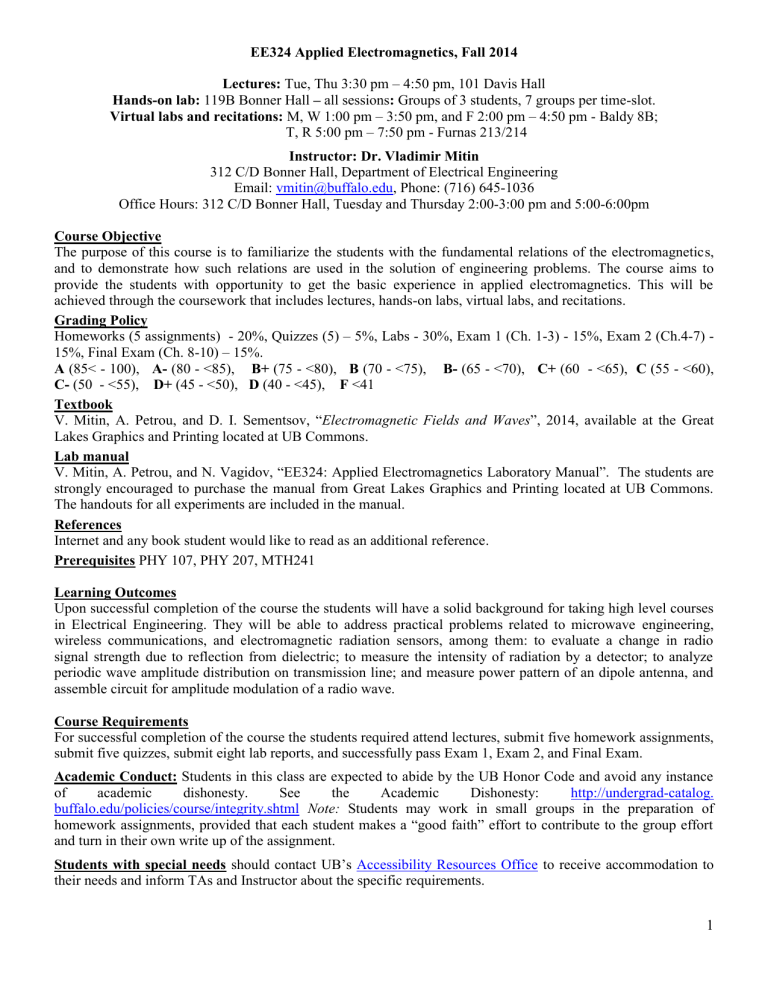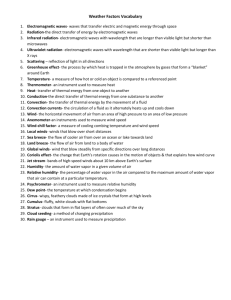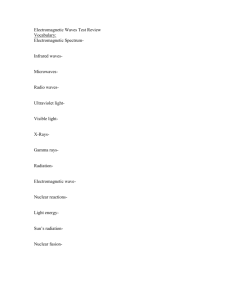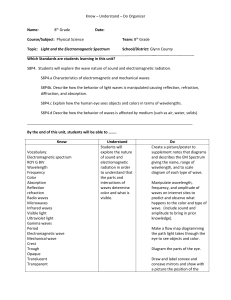Syllabus - Electrical Engineering

EE324 Applied Electromagnetics, Fall 2014
Lectures: Tue, Thu 3:30 pm – 4:50 pm, 101 Davis Hall
Hands-on lab: 119B Bonner Hall – all sessions : Groups of 3 students, 7 groups per time-slot.
Virtual labs and recitations: M, W 1:00 pm – 3:50 pm, and F 2:00 pm – 4:50 pm - Baldy 8B;
T, R 5:00 pm – 7:50 pm - Furnas 213/214
Instructor: Dr. Vladimir Mitin
312 C/D Bonner Hall, Department of Electrical Engineering
Email: vmitin@buffalo.edu
, Phone: (716) 645-1036
Office Hours: 312 C/D Bonner Hall, Tuesday and Thursday 2:00-3:00 pm and 5:00-6:00pm
Course Objective
The purpose of this course is to familiarize the students with the fundamental relations of the electromagnetics, and to demonstrate how such relations are used in the solution of engineering problems. The course aims to provide the students with opportunity to get the basic experience in applied electromagnetics. This will be achieved through the coursework that includes lectures, hands-on labs, virtual labs, and recitations.
Grading Policy
Homeworks (5 assignments) - 20%, Quizzes (5) – 5%, Labs - 30%, Exam 1 (Ch. 1-3) - 15%, Exam 2 (Ch.4-7) -
15%, Final Exam (Ch. 8-10) – 15%.
A (85< - 100), A (80 - <85), B+ (75 - <80), B (70 - <75), B (65 - <70), C+ (60 - <65), C (55 - <60),
C (50 - <55), D+ (45 - <50), D (40 - <45), F <41
Textbook
V. Mitin, A. Petrou, and D. I. Sementsov, “ Electromagnetic Fields and Waves ”, 2014, available at the Great
Lakes Graphics and Printing located at UB Commons.
Lab manual
V. Mitin, A. Petrou, and N. Vagidov, “EE324: Applied Electromagnetics Laboratory Manual”. The students are strongly encouraged to purchase the manual from Great Lakes Graphics and Printing located at UB Commons.
The handouts for all experiments are included in the manual.
References
Internet and any book student would like to read as an additional reference.
Prerequisites PHY 107, PHY 207, MTH241
Learning Outcomes
Upon successful completion of the course the students will have a solid background for taking high level courses in Electrical Engineering. They will be able to address practical problems related to microwave engineering, wireless communications, and electromagnetic radiation sensors, among them: to evaluate a change in radio signal strength due to reflection from dielectric; to measure the intensity of radiation by a detector; to analyze periodic wave amplitude distribution on transmission line; and measure power pattern of an dipole antenna, and assemble circuit for amplitude modulation of a radio wave.
Course Requirements
For successful completion of the course the students required attend lectures, submit five homework assignments, submit five quizzes, submit eight lab reports, and successfully pass Exam 1, Exam 2, and Final Exam.
Academic Conduct: Students in this class are expected to abide by the UB Honor Code and avoid any instance of academic dishonesty. See the Academic Dishonesty: http://undergrad-catalog. buffalo.edu/policies/course/integrity.shtml
Note: Students may work in small groups in the preparation of homework assignments, provided that each student makes a “good faith” effort to contribute to the group effort and turn in their own write up of the assignment.
Students with special needs should contact UB’s
Accessibility Resources Office to receive accommodation to their needs and inform TAs and Instructor about the specific requirements.
1
Course Description
Lecture component:
List of lecture topics
Electric and magnetic fields in isotropic media
1 Electrostatics
2 Magnetostatics
3 Maxwell's equations for electromagnetic field
Electromagnetic waves in homogeneous, heterogeneous and isotropic media
4. Electromagnetic waves in vacuum
5 Electromagnetic waves at the interface between two media
6 Electromagnetic waves in anisotropic media
7 Electromagnetic waves in optically active and conducting media
Electromagnetic waves in periodic and guiding structures
8 Waves in periodic structures
9 Waves in guiding structures
10 Emission of electromagnetic waves
Hands-on Lab component:
The students will carry out eight experiments at 119B Bonner Hall lab.
LAB MANUAL: The students are strongly encouraged to purchase the “EE324 Applied Electromagnetics Lab
Manual” from Great Lakes Graphics and Printing located at the UB Commons. The Lab manual contains handouts for all experiments.
GRADING: 35 % of the Final EE 324 Grade is determined from your lab reports. A grading curve will be used to determine the Lab Grade.
LAB REPORTS: Reports are due at the next regular session after each completed experiment. You will work with lab partners in taking data, but you must prepare the report by yourself.
PREPARATION FOR THE LABORATORY: Each student MUST read the appropriate lab before coming to lab each week and make an effort to understand the relevant material. Bring your Manual to each lab session.
LAB NOTEBOOK: Each student is REQUIRED to have a Lab Notebook (#77475 or equivalent quad-ruled 80 pages). These are available at the local bookstores.
LAB LOCATION: 119B Bonner Hall.
EACH LAB TAKES APPROXIMATELY 3 HOURS
EXPERIMENTS:
Eight lab experiments will be carried out by all students. Students will work in groups of three. Students with disabilities or special requirements (e.g. military service) should inform the TA as early as possible.
Experiment 1 : Propagation of errors
Experiment 2: Polarization of electromagnetic waves. Standing waves
Experiment 3: Reflection and refraction of electromagnetic waves
Experiment 4: Retardation plates
Experiment 5: Optical activity in liquids
Experiment 6: Wave diffraction by a cubic lattice of metal spheres. Bragg’s law
Experiment 7: Propagation of electromagnetic waves on a line
Experiment 8: Characteristics of the electromagnetic waves emitted from a loop dipole antenna
Virtual Lab component and recitations: Students will have virtual lab component that is scheduled in the computer lab during the same time as hands-on lab. Students will be informed in advance about virtual and/or hands-on lab. Recitations will be in the same computer lad as virtual labs: M, W, and F –Baldy 8B; T, R - Furnas
213/214.
2







